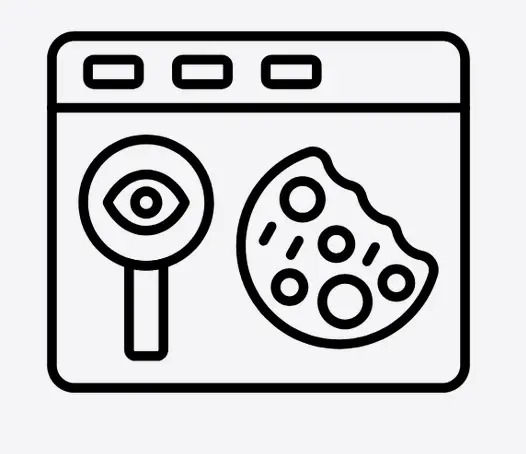Can You Ditch Cookie Banners and Still Get Useful Analytics?
Everyone hates cookie banners. Users dismiss them without reading. Site owners watch conversion rates drop. Lawyers worry about compliance. But what if you could get the behavioral analytics you actually need without any of that hassle?
After years working on privacy-preserving analytics at Mozilla and seeing how companies struggle with GDPR compliance, I’ve been testing approaches that might eliminate cookie banners entirely for many use cases. The results are promising - but there are important nuances to understand.
What Most Analytics Actually Measure
Let’s be honest about what you’re really trying to learn from your website analytics:
- Which pages get the most traffic
- Where visitors come from (referrers, campaigns)
- What content keeps people engaged
- Which features or CTAs perform best
- How users flow through your site
Traditional analytics tools like Google Analytics collect way more data than needed for these questions. They track individual users across sessions, build behavioral profiles, and store personal information - which triggers GDPR requirements and cookie banner obligations.
But what if you only collected what you actually need?
The Umami Approach: Analytics Without Tracking
Tools like Umami represent a different philosophy: collect useful behavioral data without tracking individuals. Instead of building user profiles, they focus on aggregate patterns.
Here’s what changes:
- No persistent user tracking - Each page view is independent
- No personal data collection - IP addresses are hashed, no stored user identifiers
- No cross-session linking - Can’t follow individual user journeys over time
- Privacy by design - Built to minimize data collection from the ground up
The trade-off is clear: you lose some analytical depth but gain privacy compliance and user trust.
The GDPR Compliance Question
This is where things get legally complex, and I’m not a lawyer - but the regulatory landscape suggests this approach has real advantages.
Under GDPR, you need explicit consent for tracking cookies and personal data processing. But if you’re truly not collecting personal data or tracking individuals, the requirements may be different.
Umami and similar tools argue they fall into a gray area - or potentially outside GDPR scope entirely - because they:
- Don’t use tracking cookies
- Don’t collect personally identifiable information
- Don’t build individual user profiles
- Process only aggregated, anonymized data
Some privacy lawyers agree this approach avoids GDPR triggers. Others argue that IP address hashing still constitutes personal data processing under EU interpretation.
What We Know vs What We Don’t
What seems clear:
- Cookieless analytics tools significantly reduce GDPR compliance burden
- Many privacy lawyers consider them lower risk than traditional analytics
- User experience improves without cookie banners
- You still get actionable business insights for most use cases
What’s still uncertain:
- Whether IP address hashing definitively avoids GDPR personal data definitions
- How different EU privacy authorities will interpret these approaches
- What constitutes “legitimate interest” for basic website analytics
- Whether fingerprinting techniques in some tools create new compliance issues
The Practical Reality
I’ve been running Umami on my own sites for months. The analytics are genuinely useful for understanding content performance and traffic patterns. More importantly, I haven’t needed cookie banners and users seem to appreciate the cleaner experience.
But I’m also not running an e-commerce site processing customer data, or doing sophisticated behavioral analysis for ad targeting. The use case matters.
When This Approach Works Best
Good fit:
- Content sites focused on page performance and traffic sources
- B2B companies measuring lead generation and content effectiveness
- Organizations prioritizing user experience over detailed behavioral tracking
- Companies wanting to reduce privacy compliance overhead
Probably not sufficient:
- E-commerce sites needing detailed conversion funnel analysis
- Companies doing sophisticated user segmentation or personalization
- Organizations with complex attribution requirements across multiple touchpoints
- Businesses that need individual user journey mapping
Testing the Approach
If you’re considering this route, here’s what I’d recommend:
Start parallel: Run cookieless analytics alongside your current setup for a few months. See if you get the insights you actually use for business decisions.
Audit your needs: What analytics data do you actually act on? Most companies discover they make decisions based on aggregate trends, not individual user tracking.
Consult privacy counsel: The legal landscape is evolving. Get specific advice for your jurisdiction and use case.
Test user experience: Measure how removing cookie banners affects engagement and conversion rates.
What’s Coming Next
This is part one of a series on privacy-preserving analytics approaches. Next, I’ll dive into more sophisticated techniques like differential privacy and cryptographic systems that can provide even stronger privacy guarantees while maintaining analytical utility.
But for many organizations, the cookieless analytics approach might be the right balance of privacy, compliance, and practical utility - without the complexity of advanced cryptographic systems.
The question isn’t whether privacy-first analytics will become standard. The question is which approach fits your specific needs and risk tolerance.
Running cookieless analytics on your site? I’d love to hear about your experience - especially any compliance or business impact insights.

